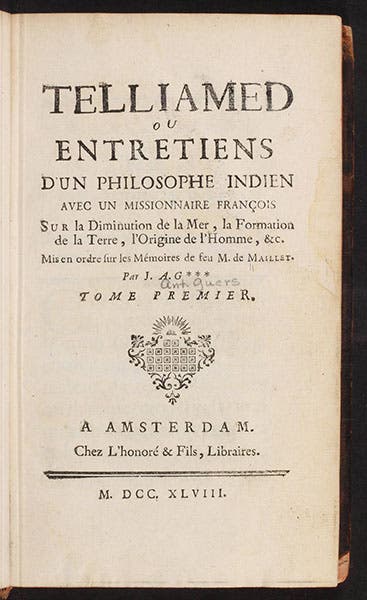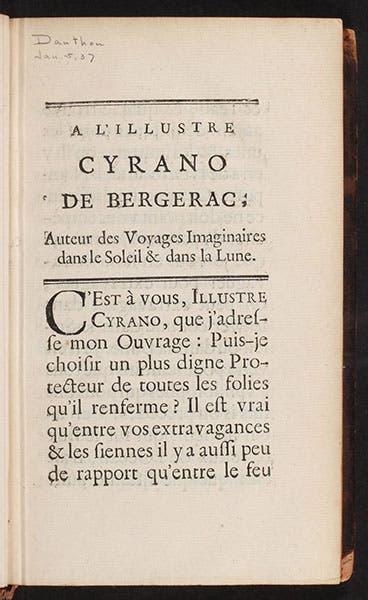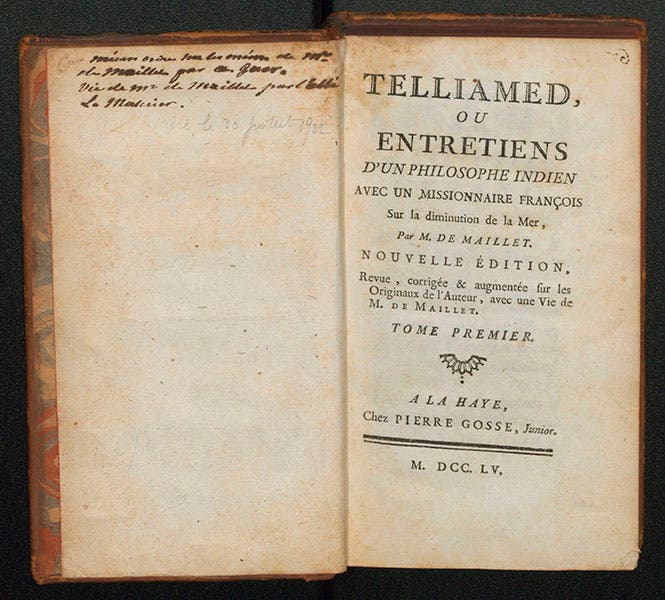Scientist of the Day - Benoit de Maillet
Benoît de Maillet, a French diplomat and geological dreamer, was born Apr. 12, 1656. De Maillet spent much of his life as the French consul to Egypt, but he thought a lot about the earth and its origin, and before he died, he wrote a romance in which an Indian philosopher tells a French missionary about the true history of the earth. Telliamed (the narrator's name) claimed the earth was once covered by the sea, which very slowly receded, and laid down all of the earth's rocks as it ebbed. He said that life first originated in the primordial seas, and gradually became more complex as the waters retreated. Finally, he claimed that the diminution of the seas was part of a cycle that recurred over a time span of several billion years. This was heady stuff, and the fact that “Telliamed” is a not-too-subtle reversal of de Maillet's name meant that the book could not be published in de Maillet's own lifetime (he died in 1738).
Telliamed first appeared in print in 1748; interestingly, the book was dedicated to Cyrano de Bergerac and his voyages to the Sun and Moon, which was the subject of our Scientist of the Day just a month ago (third image). The first edition was heavily expurgated. Still, it was sensational, and hence successful, quickly requiring a second edition (1749) and a translation into English in 1750. A less-censored edition was published in 1755, after the Comte de Buffon's own theory of the earth (1749) had made de Maillet's seem less scandalous (fourth image). Nevertheless, we had to wait until the modern edition of 1968, edited from original manuscripts, to find out how daring de Maillet really was.
All of the editions mentioned above are in the Library's History of Science Collection. We featured the first edition, once upon a time, in our exhibition, Theories of the Earth (1984). The first three editions in our Library have been scanned and are available online: 1748, 1749, and 1750. The 1755 edition is being scanned right now.
The 1755 edition is also valuable because it contains the only biography of de Maillet available, written by the editor Abbé Le Mascrier (fifth image).
The only portrait of de Maillet that survives is an engraving of 1735 by Etienne Jeurat (first image); this copy is in the National Galleries of Scotland. Dr. William B. Ashworth, Jr., Consultant for the History of Science, Linda Hall Library and Associate Professor, Department of History, University of Missouri-Kansas City. Comments or corrections are welcome; please direct to ashworthw@umkc.edu.










